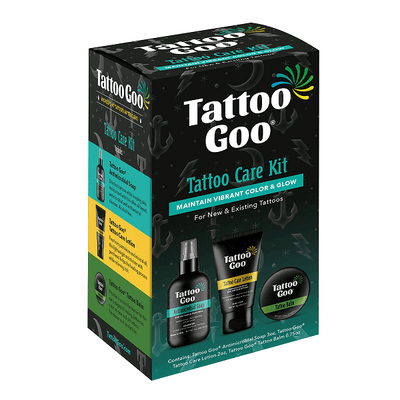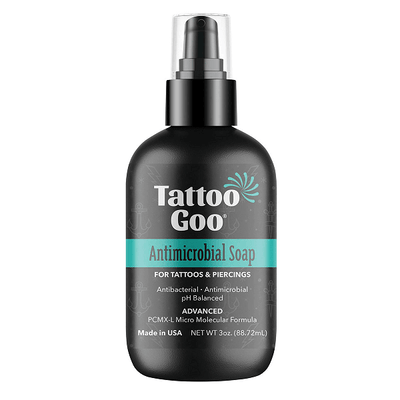Building a tattoo portfolio can be overwhelming. Many artists struggle with how to best display their work, keep their portfolios updated, and stand out in a competitive industry. These challenges can prevent talented artists from gaining the recognition they deserve. Our ultimate guide to tattoo portfolio development offers practical tips to guide you create a standout portfolio that attracts clients and showcases your unique style effectively.
How to build and maintain a professional tattoo portfolio

Selecting your best work
A great tattoo portfolio's foundation is selecting your best work. Focus on quality rather than quantity, showcasing a range of styles or highlighting your speciality if you focus on a specific type of tattoo art. Keeping your portfolio current is crucial, so regularly update it with your latest and most beautiful pieces.
High-quality images
The images of your tattoos should be of high quality, as they are the primary way potential clients and other artists will judge your skills. Use a quality camera to capture clear, well-lit photographs of your work. Try to use natural lighting to avoid any unnatural colour casts or shadows. Ensure consistency in how your tattoos are presented, using a uniform background and style for all photographs to make your portfolio look cohesive and professional.
Showcasing process and versatility
Demonstrating versatility and the ability to handle different tattoo styles, sizes, and locations on the body can make your portfolio stand out. Include photos of fresh and healed tattoos to show the durability and quality of your work over time. If possible, include sketches and digital designs to illustrate your creative process, giving potential clients insight into how you develop your designs from concept to execution.
Professional presentation
Your portfolio should be professionally presented, whether a physical book or a digital collection. For a physical portfolio, invest in a quality binder or album that reflects your professionalism and allows you to easily update and rearrange contents. A digital portfolio should be equally well-organised and hosted on a professional website or platform that reflects your artistic style.
Testimonials and credentials
Including client testimonials in your portfolio can greatly enhance your credibility. Positive feedback from past clients can reassure potential clients of your professionalism and skill. Additionally, any relevant certifications, education, or awards should be prominently featured to further establish your qualifications and standing in the tattoo community.
Organisation and updates
Organising your portfolio thoughtfully can enhance its impact. Grouping tattoos by style, colour, or body location can help viewers find relevant examples quickly. Regular updates are important to remove older works that may no longer represent your best work and to refresh the portfolio with new, innovative pieces that showcase your evolving skills.
Utilising online platforms
A professionally designed site can serve as the central hub for your digital portfolio, while social media platforms like Instagram, Facebook, and Pinterest can help you reach a wider tattoo audience, engage with followers, and showcase your work dynamically.
Feedback for improvement
Periodic portfolio reviews by peers or mentors can provide feedback that you can useto refine your presentation and technique. Client feedback can also be instrumental in understanding what attracts clients to your work, helping you better target your market and improve client satisfaction.
Networking and exposure
Engaging with the broader tattoo community through conventions, workshops, and exhibitions can give networking opportunities and expose you to new ideas and trends. Collaborating with other tattoo artists or participating in community events can also broaden your exposure and bring new clients.
Documentation and backup
Maintaining a digital backup of your portfolio is required to safeguard against physical damage or loss. Additionally, consider copyrighting your original designs to protect your artistic property and ensure that your creative output is respected and remains uniquely yours.
Digital vs. physical tattoo portfolios: Pros and cons

When considering how to showcase your tattoo artwork, you have the option between digital and physical portfolios. Each format offers distinct advantages and challenges, depending on your specific needs and the preferences of your audience.
Digital tattoo portfolios
Pros:
- Broader reach: A digital portfolio can be viewed by anyone worldwide, so you can attract clients and interest from beyond your local area. This global accessibility can significantly expand your potential client base.
- Ease of updates: You can update your digital portfolio at any moment with new artwork, ensuring it always reflects your best and most recent work. This is particularly useful for showing your growth and evolution as an artist.
- Interactive features: You can enhance your digital portfolio with multimedia elements like videos, which might show the tattoo process or final moving images of the tattoo on the body, offering a dynamic presentation of your work.
- Cost-effective: Once set up, maintaining a digital portfolio is generally less expensive than a physical one. You avoid costs related to printing, binding, and physically showcasing your works.
- Integration with social media: Digital portfolios can be easily shared on social medias, increasing their visibility and allowing their work to be seen by a broader audience.
Cons:
- Dependence on technology: Viewers need the right technology and internet access to see your work. Plus, your portfolio’s appearance might vary depending on the device or screen viewed, which could affect how your tattoos are presented.
- Overwhelming competition: The internet is saturated with digital content. Standing out in a sea of digital portfolios can be challenging, requiring you to invest significant effort in marketing and SEO to get noticed.
- Less personal interaction: A digital portfolio lacks the personal touch of physically browsing through artwork, which can be a significant drawback in an art form as personal as tattooing.
Physical tattoo portfolios
Pros:
- Tangible experience: There’s something impactful about being able to physically handle a portfolio. For you, this means you can create a memorable experience by using high-quality prints that show the true colour and detail of your tattoos.
- Controlled presentation: You control the order in which your works are seen, which can help you strategically present your art to tell a story or highlight certain aspects of your style and skill.
- No technological barrier: A physical portfolio doesn’t rely on internet access or digital devices. This can be particularly advantageous in face-to-face meetings where internet issues or device compatibility aren’t factors.
Cons:
- Limited reach: Your physical portfolio can only be in one place at a time, greatly limiting the number of people who can view it compared to a digital portfolio.
- Higher costs and maintenance: Updating your physical portfolio is time-consuming and costly, as it involves printing new photos and potentially re-binding your portfolio.
- Less convenient to transport: Carrying a physical portfolio can be cumbersome, especially if it’s large or if you need to transport multiple copies to various locations.
Choosing between the two
Ultimately, choosing between a digital and a physical portfolio might depend on how you want to interact with your clients and how you prefer to present your work. Many tattoo artists choose to maintain both to leverage the advantages of each format and cater to different preferences and scenarios. This hybrid approach ensures that you are prepared for any opportunity that might arise, whether it’s an online inquiry or an in-person consultation.
Reasons to use tattoo portfolios

- Showcase your tattoo skills: A tattoo portfolio displays your best work, highlighting your skills and artistic style to potential clients.
- Attract new clients: A great portfolio can impress potential tattoo clients and convince them to choose you as their tattoo artist.
- Build trust: Presenting a professional portfolio helps build trust by showing that you are capable of delivering high-quality tattoos.
- Encourage referrals: A strong portfolio can impress clients, making them more likely to recommend you to others.
- Track your progress: A portfolio is also a personal tool that helps you see how your skills have evolved over time.
- Open new opportunities: A diverse portfolio can lead to other professional opportunities beyond just tattooing, like collaborations or art shows.
- Stand out in the industry: In a competitive field, a standout portfolio can elevate your reputation and help you secure more clients.
- Improve consultations: It aids in consultations, helping clients visualise what they want and enabling smoother communication about design preferences.
How to organise your tattoo portfolio
Select your best work:
Choose a variety of pieces that showcase your skill across different styles or focus on the style in which you specialise. Prioritise quality over quantity—each piece should represent your best work.
High-quality images:
Ensure all photographs are high-resolution and professionally taken if possible. Good lighting is crucial to bring out the true colours and details of each tattoo. Photos should be clear and focused, with consistent framing and background, to maintain a professional appearance.
Categorise your work:
Group your tattoos by style or theme to make it easy for viewers to find what interests them. Common categories include realism, traditional, blackwork, portraits, colour, and minimalistic designs. Alternatively, you could organise them by body part (arm, back, leg, etc.).
Provide context:
Include brief descriptions for each piece when possible. This might include the inspiration, the story behind the tattoo, any challenges faced during the tattooing process, and why it’s included in your portfolio. This adds depth and personal touch to your work.
Include an about me section:
Introduce yourself with a professional bio that includes your background, experience, and artistic philosophy. Mention any special skills, like custom design work or expertise in a particular tattooing style.
Showcase testimonials and reviews:
Positive feedback from clients can be extremely persuasive. Include a few client testimonials that speak to your professionalism, skill, and the quality of the client experience.
Update regularly:
Keep your portfolio current by periodically adding new work and removing older pieces that no longer represent your best work. This shows that you are active and evolving in your craft.
Professional presentation:
Use a clean, easy-to-navigate layout whether it's in a digital format or a physical portfolio. For digital portfolios, ensure they are mobile-friendly and load quickly.
Contact information:
Clearly display your contact information or include a contact form. Make it as easy as possible for potential clients to reach out to you.
Social media and online presence:
Link to your professional social media accounts where you regularly post your work. This can help build a following and keep your audience engaged with your art.
Final thoughts
Crafting an outstanding tattoo portfolio is essential for showcasing your skills and building a successful career in tattooing. Our guide offers practical tips to help you create a portfolio that highlights your best work and attracts potential clients. Remember, maintaining the beauty of your tattoos is just as important as the art itself.
For optimal tattoo care, consider the Tattoo Goo Tattoo Care Kit. This 3-in-1 kit includes Tattoo Goo Lotion, Soap, and Balm, perfect for keeping your tattoos vibrant and healthy. It's currently on sale on our website. Don’t miss out on this great deal—visit our website now to purchase the Tattoo Goo Tattoo Care Kit and give your tattoos the care they deserve.




























































 Studio supplies
Studio supplies












 Power & batteries
Power & batteries







 Aftercare
Aftercare



















 Apprentice
Apprentice


 Piercing & jewellery
Piercing & jewellery







 PMU supplies
PMU supplies



 New arrivals
New arrivals
 Gift vouchers
Gift vouchers
 Shop all
Shop all










































